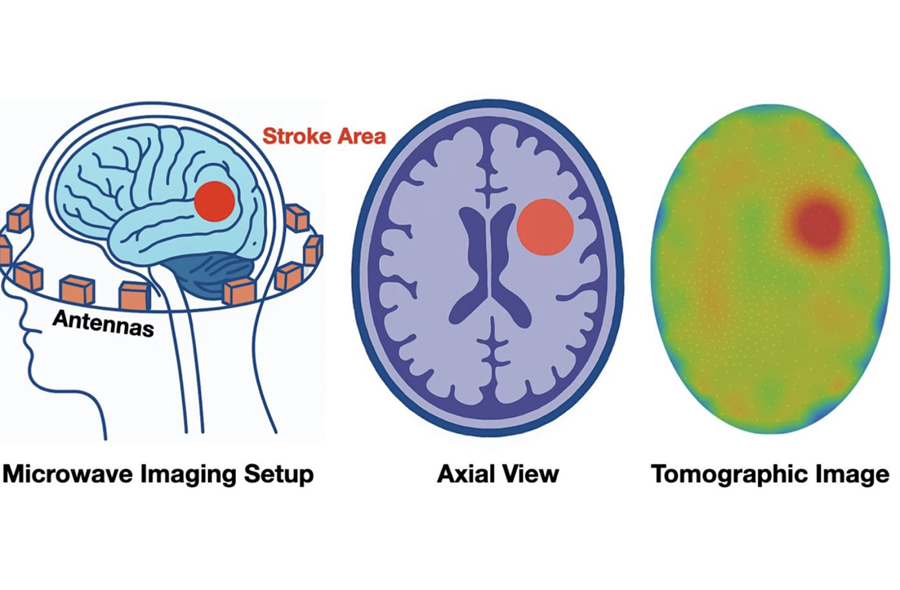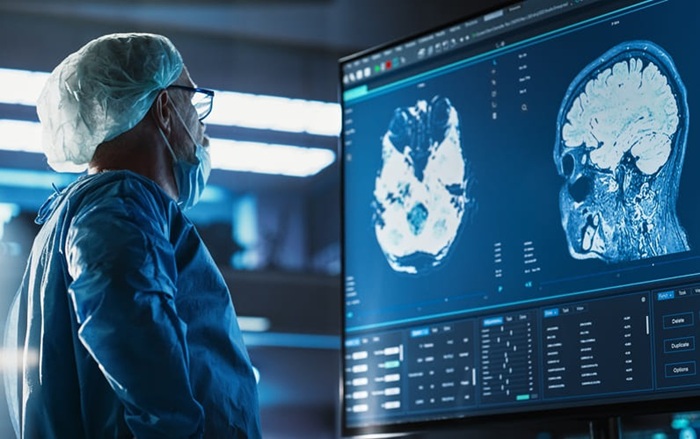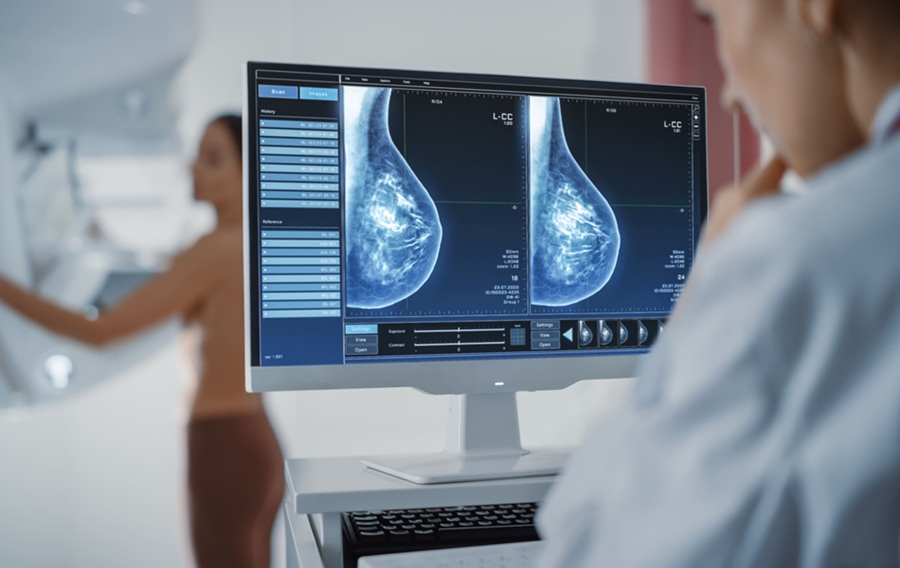Abdominal Ultrasound Aids Diagnosis of Pediatric Conditions
|
By MedImaging International staff writers Posted on 13 Dec 2021 |

Image: Abdominal ultrasound can help detect midgut malrotation (Photo courtesy of iStock Photos)
Abdominal ultrasound shows high sensitivity and specificity in detection of midgut malrotation and volvulus in pediatric patients, claims a new study.
Researchers at Texas Children's Hospital (Houston, USA) conducted a study of 551 children (newborn to eighteen years of age, 283 male) from three tertiary children's hospitals with suspected midgut malrotation; a total of 574 ultrasound exams were collected. Retrospective data were also included, and all participants were evaluated between 2018 and 2021. Children with known malrotation or normal rotation were excluded.
The results showed that ultrasound had a sensitivity of 93% and a specificity of 95% when imaging diagnostic malrotation; for equivocal tests, ultrasound's sensitivity did not increase, while specificity dropped to 87%. For volvulus, ultrasound had 100% sensitivity and 98% specificity on diagnostic tests; for equivocal tests, ultrasound retained perfect sensitivity, but specificity dropped to 95%. If all equivocal tests were assumed negative, sensitivity dropped to 85%, and specificity increased to 98%. The study was presented at the RSNA annual meeting, held during November 2021 in Chicago (IL, USA).
“The radiologist already knew the answer, and the performing surgeon had a feeling it was the answer. Since additional findings and alternative diagnoses are not uncommon, ultrasound does provide that additional angle,” said lead author Haithuy Nguyen, MD. “Even if we had to do an upper GI, a lot of the information was already there, but we just needed to prove to the surgeon that there was malrotation. So, everything just sped up regardless.”
During pregnancy, a baby's bowel normally rotates 270-degree counterclockwise and then becomes fixed in position. In one out of every 500 births, this embryonic process is defective. Traditionally, intestinal malrotation was treated via Ladd's procedure, which untwists the intestines and alleviates the bowel obstruction by dividing adhesive bands between the duodenum and colon. However, despite the relief of the obstruction and temporary improvement in symptoms, Ladd's procedure does not prevent the intestine from recurrent future twisting (volvulus), which can cut off the blood supply and be life-threatening at any age.
Related Links:
Texas Children's Hospital
Researchers at Texas Children's Hospital (Houston, USA) conducted a study of 551 children (newborn to eighteen years of age, 283 male) from three tertiary children's hospitals with suspected midgut malrotation; a total of 574 ultrasound exams were collected. Retrospective data were also included, and all participants were evaluated between 2018 and 2021. Children with known malrotation or normal rotation were excluded.
The results showed that ultrasound had a sensitivity of 93% and a specificity of 95% when imaging diagnostic malrotation; for equivocal tests, ultrasound's sensitivity did not increase, while specificity dropped to 87%. For volvulus, ultrasound had 100% sensitivity and 98% specificity on diagnostic tests; for equivocal tests, ultrasound retained perfect sensitivity, but specificity dropped to 95%. If all equivocal tests were assumed negative, sensitivity dropped to 85%, and specificity increased to 98%. The study was presented at the RSNA annual meeting, held during November 2021 in Chicago (IL, USA).
“The radiologist already knew the answer, and the performing surgeon had a feeling it was the answer. Since additional findings and alternative diagnoses are not uncommon, ultrasound does provide that additional angle,” said lead author Haithuy Nguyen, MD. “Even if we had to do an upper GI, a lot of the information was already there, but we just needed to prove to the surgeon that there was malrotation. So, everything just sped up regardless.”
During pregnancy, a baby's bowel normally rotates 270-degree counterclockwise and then becomes fixed in position. In one out of every 500 births, this embryonic process is defective. Traditionally, intestinal malrotation was treated via Ladd's procedure, which untwists the intestines and alleviates the bowel obstruction by dividing adhesive bands between the duodenum and colon. However, despite the relief of the obstruction and temporary improvement in symptoms, Ladd's procedure does not prevent the intestine from recurrent future twisting (volvulus), which can cut off the blood supply and be life-threatening at any age.
Related Links:
Texas Children's Hospital
Latest Ultrasound News
- Wearable Ultrasound Imaging System to Enable Real-Time Disease Monitoring
- Ultrasound Technique Visualizes Deep Blood Vessels in 3D Without Contrast Agents
- Ultrasound Probe Images Entire Organ in 4D

- Disposable Ultrasound Patch Performs Better Than Existing Devices
- Non-Invasive Ultrasound-Based Tool Accurately Detects Infant Meningitis
- Breakthrough Deep Learning Model Enhances Handheld 3D Medical Imaging
- Pain-Free Breast Imaging System Performs One Minute Cancer Scan
- Wireless Chronic Pain Management Device to Reduce Need for Painkillers and Surgery
- New Medical Ultrasound Imaging Technique Enables ICU Bedside Monitoring
- New Incision-Free Technique Halts Growth of Debilitating Brain Lesions
- AI-Powered Lung Ultrasound Outperforms Human Experts in Tuberculosis Diagnosis
- AI Identifies Heart Valve Disease from Common Imaging Test
- Novel Imaging Method Enables Early Diagnosis and Treatment Monitoring of Type 2 Diabetes
- Ultrasound-Based Microscopy Technique to Help Diagnose Small Vessel Diseases
- Smart Ultrasound-Activated Immune Cells Destroy Cancer Cells for Extended Periods
- Tiny Magnetic Robot Takes 3D Scans from Deep Within Body
Channels
Radiography
view channel
AI Detects Early Signs of Aging from Chest X-Rays
Chronological age does not always reflect how fast the body is truly aging, and current biological age tests often rely on DNA-based markers that may miss early organ-level decline. Detecting subtle, age-related... Read more
X-Ray Breakthrough Captures Three Image-Contrast Types in Single Shot
Detecting early-stage cancer or subtle changes deep inside tissues has long challenged conventional X-ray systems, which rely only on how structures absorb radiation. This limitation keeps many microstructural... Read moreMRI
view channel
Novel Imaging Approach to Improve Treatment for Spinal Cord Injuries
Vascular dysfunction in the spinal cord contributes to multiple neurological conditions, including traumatic injuries and degenerative cervical myelopathy, where reduced blood flow can lead to progressive... Read more
AI-Assisted Model Enhances MRI Heart Scans
A cardiac MRI can reveal critical information about the heart’s function and any abnormalities, but traditional scans take 30 to 90 minutes and often suffer from poor image quality due to patient movement.... Read more
AI Model Outperforms Doctors at Identifying Patients Most At-Risk of Cardiac Arrest
Hypertrophic cardiomyopathy is one of the most common inherited heart conditions and a leading cause of sudden cardiac death in young individuals and athletes. While many patients live normal lives, some... Read moreNuclear Medicine
view channel
PET Imaging of Inflammation Predicts Recovery and Guides Therapy After Heart Attack
Acute myocardial infarction can trigger lasting heart damage, yet clinicians still lack reliable tools to identify which patients will regain function and which may develop heart failure.... Read more
Radiotheranostic Approach Detects, Kills and Reprograms Aggressive Cancers
Aggressive cancers such as osteosarcoma and glioblastoma often resist standard therapies, thrive in hostile tumor environments, and recur despite surgery, radiation, or chemotherapy. These tumors also... Read more
New Imaging Solution Improves Survival for Patients with Recurring Prostate Cancer
Detecting recurrent prostate cancer remains one of the most difficult challenges in oncology, as standard imaging methods such as bone scans and CT scans often fail to accurately locate small or early-stage tumors.... Read moreGeneral/Advanced Imaging
view channel
New Algorithm Dramatically Speeds Up Stroke Detection Scans
When patients arrive at emergency rooms with stroke symptoms, clinicians must rapidly determine whether the cause is a blood clot or a brain bleed, as treatment decisions depend on this distinction.... Read more
3D Scanning Approach Enables Ultra-Precise Brain Surgery
Precise navigation is critical in neurosurgery, yet even small alignment errors can affect outcomes when operating deep within the brain. A new 3D surface-scanning approach now provides a radiation-free... Read moreImaging IT
view channel
New Google Cloud Medical Imaging Suite Makes Imaging Healthcare Data More Accessible
Medical imaging is a critical tool used to diagnose patients, and there are billions of medical images scanned globally each year. Imaging data accounts for about 90% of all healthcare data1 and, until... Read more
Global AI in Medical Diagnostics Market to Be Driven by Demand for Image Recognition in Radiology
The global artificial intelligence (AI) in medical diagnostics market is expanding with early disease detection being one of its key applications and image recognition becoming a compelling consumer proposition... Read moreIndustry News
view channel
GE HealthCare and NVIDIA Collaboration to Reimagine Diagnostic Imaging
GE HealthCare (Chicago, IL, USA) has entered into a collaboration with NVIDIA (Santa Clara, CA, USA), expanding the existing relationship between the two companies to focus on pioneering innovation in... Read more
Patient-Specific 3D-Printed Phantoms Transform CT Imaging
New research has highlighted how anatomically precise, patient-specific 3D-printed phantoms are proving to be scalable, cost-effective, and efficient tools in the development of new CT scan algorithms... Read more
Siemens and Sectra Collaborate on Enhancing Radiology Workflows
Siemens Healthineers (Forchheim, Germany) and Sectra (Linköping, Sweden) have entered into a collaboration aimed at enhancing radiologists' diagnostic capabilities and, in turn, improving patient care... Read more



















